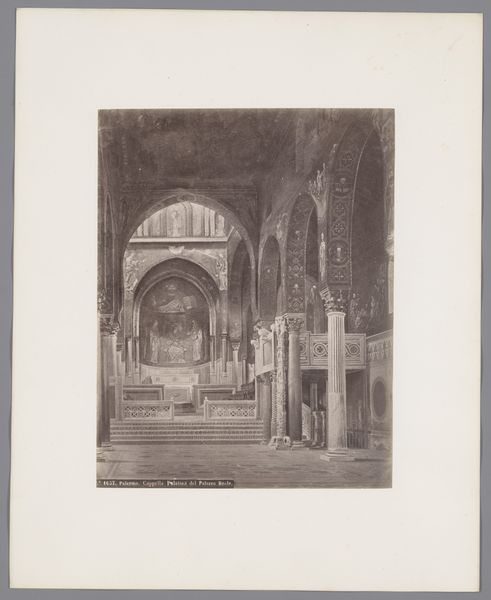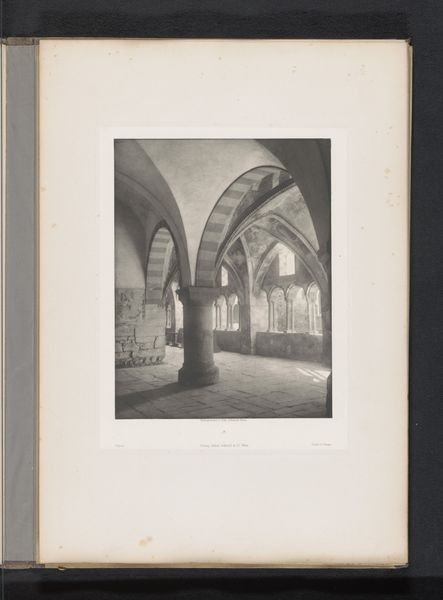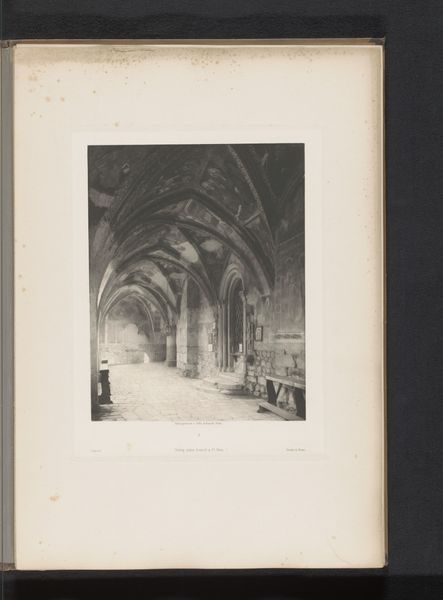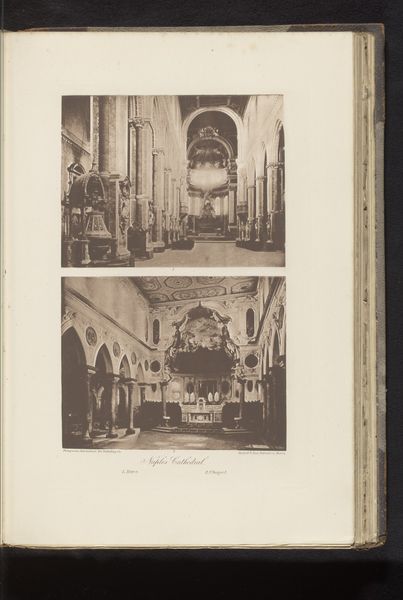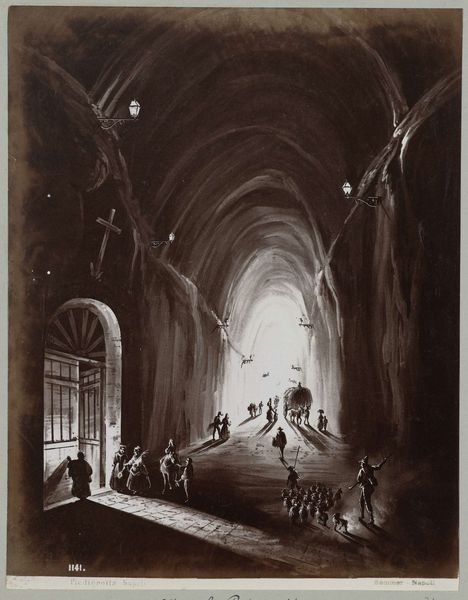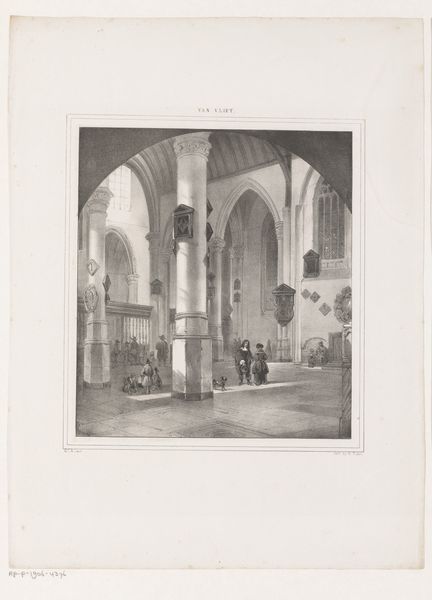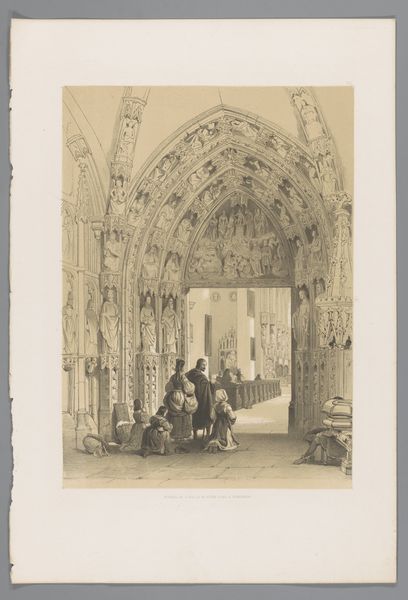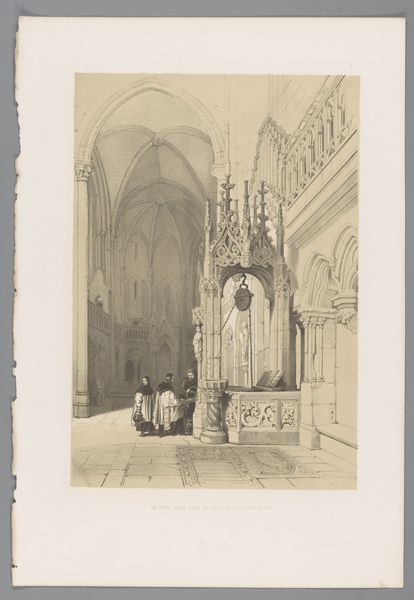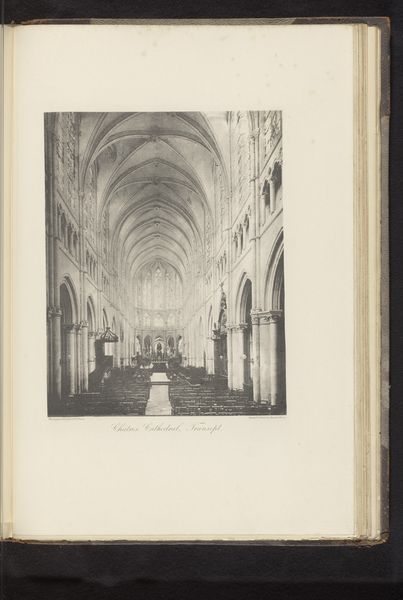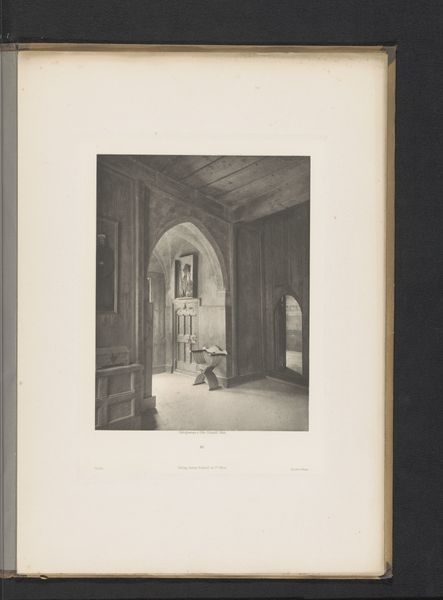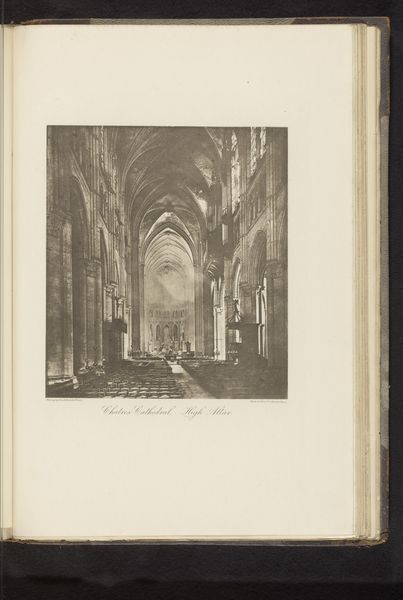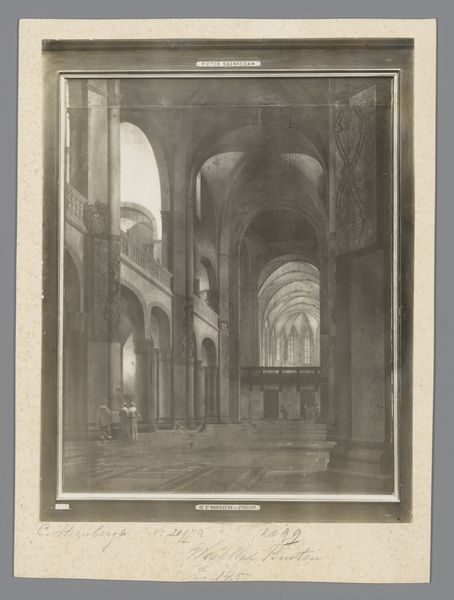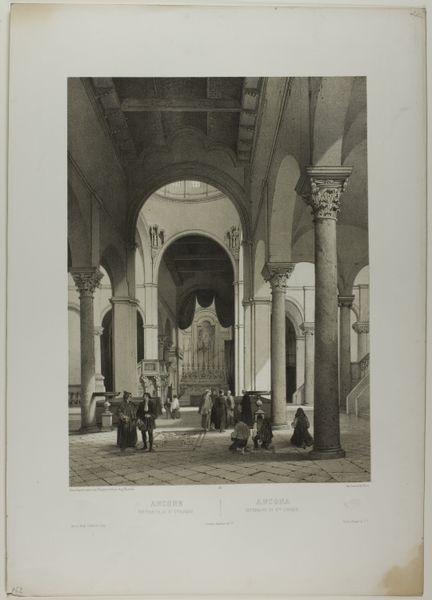
Fotoreproductie van (vermoedelijk) een tekening van een gang in de grotten van Pozzuoli c. 1870 - 1900
0:00
0:00
photography
#
landscape
#
photography
#
realism
Dimensions: height 195 mm, width 251 mm
Copyright: Rijks Museum: Open Domain
Editor: Here we have a photographic reproduction, likely from between 1870 and 1900, of what’s thought to be a drawing of a passageway in the caves of Pozzuoli, created by Edizione Brogi. The first thing that strikes me is the strong directional pull into the picture and how that contrast shapes the viewer's journey through the tunnel. What stands out to you from a formal point of view? Curator: Thank you. Indeed, let's analyze the formal structure. Observe the strategic use of chiaroscuro. How does the interplay of light and shadow delineate the cavernous space, guiding our gaze through its depth? Note how the tonal gradations are not just representational, but actively construct the visual architecture. What of the composition? Does it adhere to traditional landscape conventions, or does it deviate in any meaningful way? Editor: It definitely deviates; it almost feels claustrophobic, even with the recession into space. Are there elements that particularly contribute to that tension? Curator: Precisely! Examine the texture created by the uneven tunnel walls contrasted with the relatively smooth road surface. Consider also the placement and repetition of the streetlamps. They not only punctuate the darkness, providing visual rhythm, but also emphasize the tunnel's artificial construction within this naturally formed space. This highlights an artificial construct within the organic form of the caves, something to investigate more fully. Do you agree that the juxtaposition highlights tension? Editor: Absolutely. I hadn’t thought of the man-made lamps in opposition to the cave itself. It really focuses my reading of the piece. Curator: A formal analysis provides tools. How they are employed depends on the image and how the structure interacts with context, as we discovered. It's imperative not to isolate these qualities but to weave them together in nuanced ways.
Comments
No comments
Be the first to comment and join the conversation on the ultimate creative platform.

